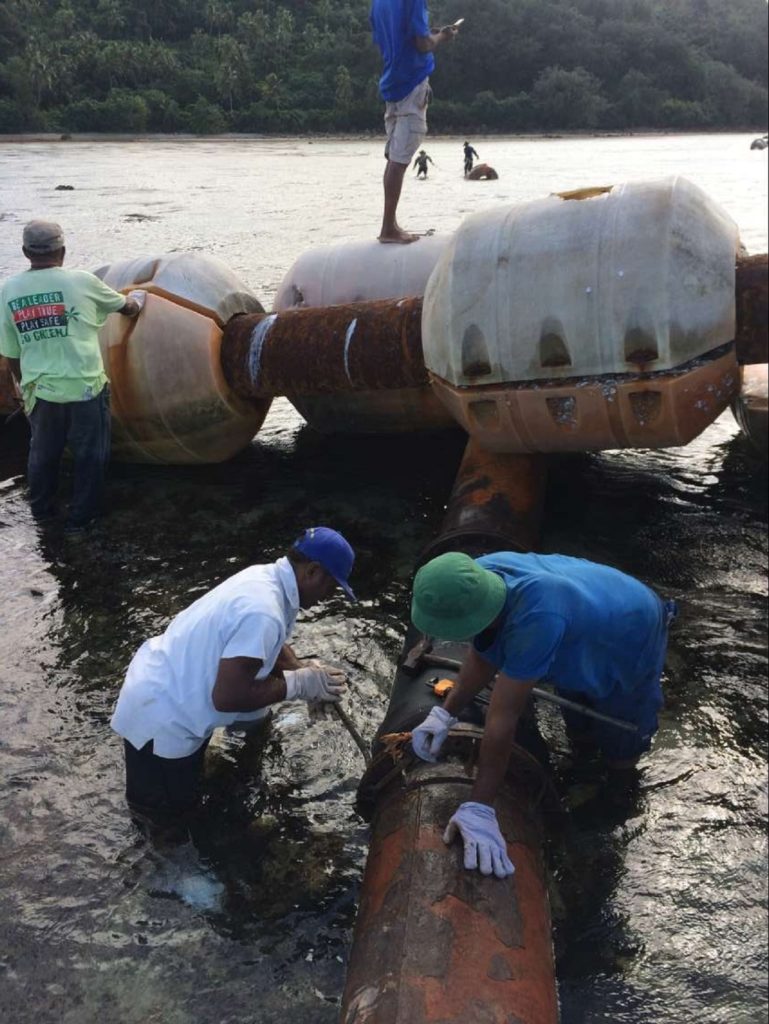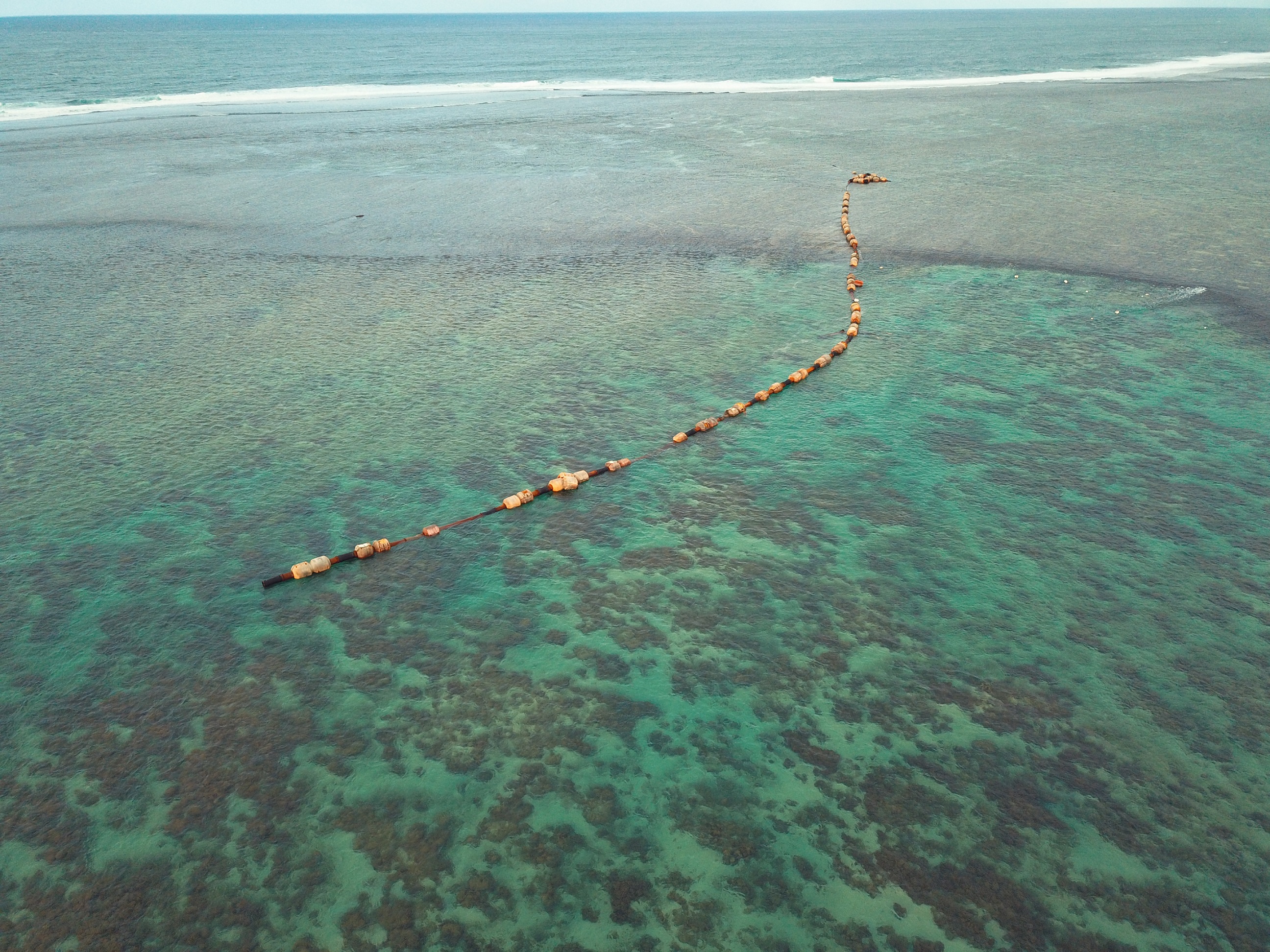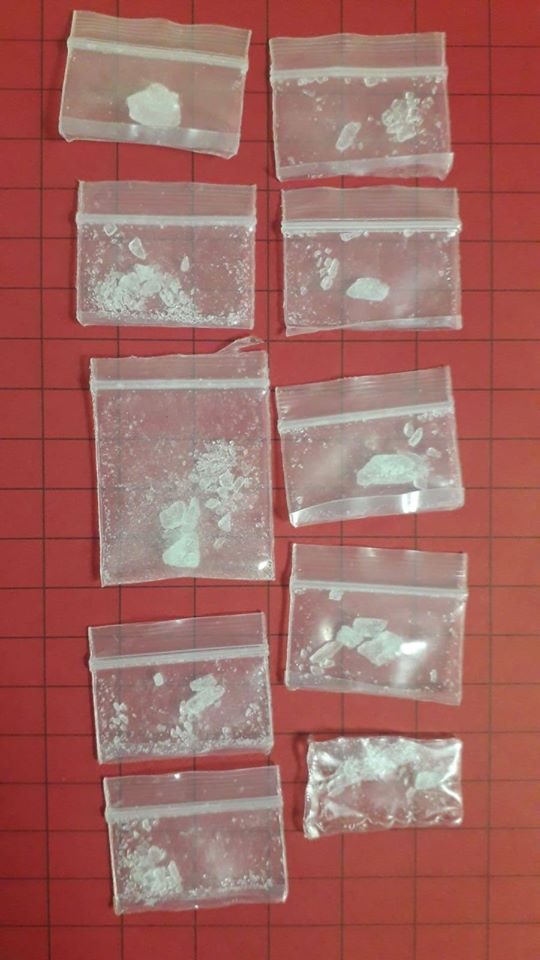VILLAGERS of the Tikina Korolevu-i-wai are lamenting the loss of their reef off the coast of the Sigatoka river mouth which was destroyed by a 120m long metal pipe in April.
The structure, which belongs to China Railway First Group (CRFG) drifted onto the reef during Tropical Cyclone Keni and is stuck there.
District rep, Luke Tabuhakia who also happens to be the head of the Tikina’s environment committee said the pipes crushed the reef structure daily.
“Keitou sa kila ni dua na I wase ni cakau ya sa vakacacani vakadua, sa na sega ni lesu tale mai na kena bulabula dau kila tani kina (We know that reef will never come back, can never return to the health and beauty it used to be renown for),” he said.
“Ia keitou sa kerekere me ratou mai kauta vakatotolo na nodratou i yaya ni cakacaka, me bau rawa ni lesu mai na ika. (We ask that they quicken their efforts to remove their property so the fish can at least return.”
Located near the Udu Channel, the “Haravi (Saravi)” reef is named that way and like the name suggests, the marine life which called it home was ‘a sight to see’, Mr Tabuhakia explains.
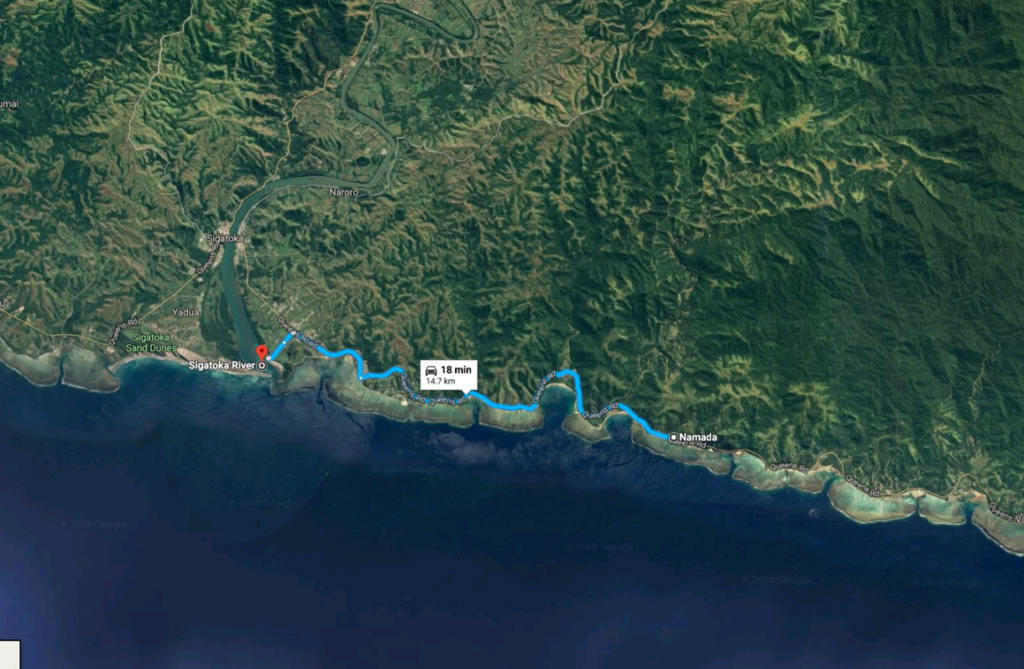
Closest to the village of Namada which derives most of its foods stock from the ocean, the reef is renown in the area for its abundance of Grade A fish and seafood.
“Haravi means Saravi (The Itaukei word for to be seen) because it is where you go to see the beauty of the ocean. Everything you want to see in the ocean, you’ll find it there, all your questions about the sea is there,” Mr Tabuhakia said.
“After the pipes were stuck on the reef, we went onto the reef. I was very sad to see the damage it has caused.”
Villagers said fishing expeditions for the month of May has resulted in little or no fish.
He claims that recently fisherfolk would spend an entire day either spear diving or using the hand in line fishing method common in coastal communities and not turn up a catch.
“E liu, na ika da lako ga da lai kaukau mai, na qoli madaga e sega ni gadrevi. Na gauna qo, sa ra dro kece na ika, e rogo levu na I vadugu ni kaukaumea e dela ni cakau. (In the past, you didn’t even need nets to harvest the fish, you could literally just go and get them off of the reef. Now, not a single fish can be seen in the area. The sound of the metal pipe is so loud on the reef, I believe it is scaring the fish away,” Mr Tabuhakia said.
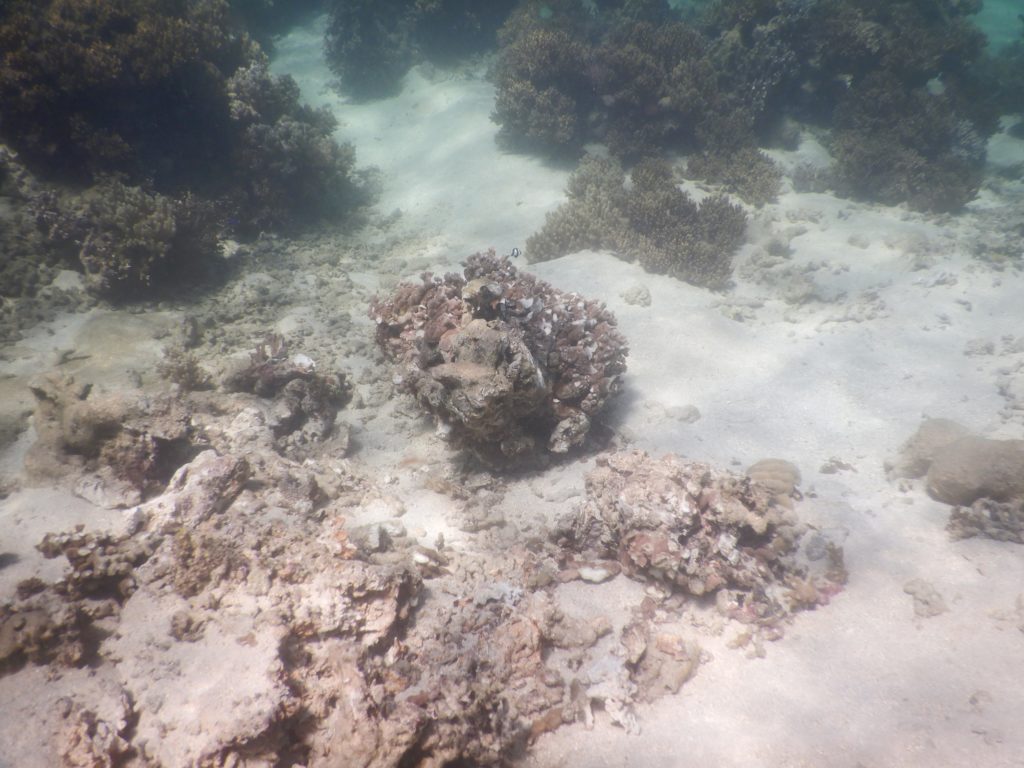
Describing the damage to the reef, the Tikina Representative said it was as if a bulldozer grazed the reef.
Mr Tabuhakia said the villagers all along the Coral Coast had heard of the damage and were concerned.
“Au se kila ga e rua na leqa lelevu ma yacova na neitou qoliqoli, dua na kena mai vakamatei na ika e na veisau ni draki ni 2016, dua qo. E tautauvata na kena varerevaki vei keimami. (We know of only two major incidents to affect our marine resources, one was in 2016 when many fish washed up dead on our shores, and another is this incident. We are just as concerned this time.)”
Local marine biologist Victor Bonito (PhD) who has lived in the area for several decades has himself inspected the metal pipes and assessed damage to the local biodiversity.
“Metal pipe approximately 60cm in diameter and 150m in length with floats attached to it washed on the reef near Udu Channel. It was unclear exactly where this pipe came from, but it appeared like something that would be used for dredging,” Dr. Bonito said.
“When we found the pipe on the reef, it was tied to a tree with cable and shackles. Apparently the pipe dragged the tree when it washed away from where it was stored, and managed to drag the tree across the reef with it as well.”
“When the pipe came over the reef, it dragged across the reef turning the hard reef substrate and living corals it came into contact with into rubble. As the pipe was folded over on itself at one end, it remains stationary on that end, while the other end, which is still buoyant due to the large floats on it, swings around daily with changes in the tides and wind. As it moves, it also is breaking off living corals, and grinding the reef into small rubble.”
Both Mr Tabuhakia and Dr. Bonito contacted local authorities immediately after the incident but received no response.
However, communications to the CRFG proved productive when company officials confirmed the equipment was indeed theirs.
“After inquires about it with other residents of Sigatoka area, I learned it was most likely equipment belonging to China Railway First Group who were doing dredging work in the Sigatoka River. While I never saw how the pipes were being kept by the company, I received photos from residents near Sigatoka River who had taken a picture on 14th February, 2018 of what appears to be the same pipe left along the river bank.”
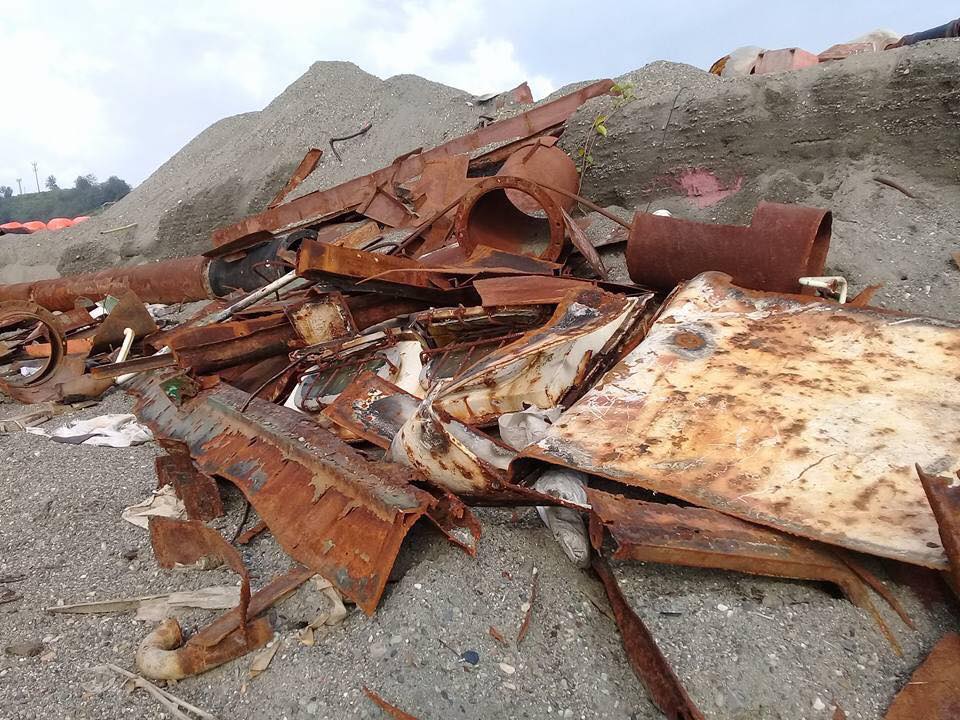
Dr. Bonito who runs a local conservation organisation called Reef Explorer (Fiji) Ltd sent staff to asses damage and they took photographs of other metal equipment owned by the company which was left on the sand along the river bank near the Sigatoka river mouth.
“After meeting with company officials from CRFG on April 20th, I learned it was indeed their pipe. They claim they left it along the river side and that it was secured to more than one tree,” Dr. Bonito said.
Fiji Times Online met with CRFG Marketing Manager, Ken Xue who confirmed the pipes and floaters had been used in the dredging project.
In January, the company began a three-year dredging project paid for by the Ministry of Agriculture at a cost of $890,000 and designed to reduce flood risk.
The project will dredge 3.4km of the river from the mouth to up to 1km away from the Sigatoka Bridge with the target of extracting 1.2 million cubic meters of silt and sand.
“As per our project safety management system the said pipes and floaters are always secured to prevent the same becoming a hazard and to prevent the prevailing situation,” Mr Ken Xue said.
“Unfortunately, and as you are aware, we were hit by several cyclones, which despite our best endeavours, caused the pipes and floaters to break away and float to their current location.”
Mr Ken explained the CRFG assessment had implemented “interim measures include re-securing the pipes and floaters to prevent them from drifting out to open waters.”
He said the floaters were to prevent damage to the reef and the surrounding ecosystem.
“Our assessment team has also conducted clean-up works removing any trapped debris and/or rubbish along the surrounding areas,” Mr Ken said.
More on the efforts to clear the metal pipes, tomorrow.
